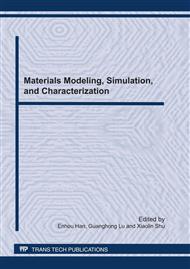p.282
p.289
p.296
p.302
p.308
p.315
p.321
p.328
p.336
Effect of Environmental Factors of Mannanase on Konjac Glucomannan Molecular Dimension
Abstract:
The environmental factors of mannanase konjac glucomannan (KGM) have been investigated in aqueous solution. Molecular weight (Mw) and molecular weight distribution (WMD) of the degraded KGM were measured by GPC. During the degradation process, the molecular weight of the enzymatic products decreases with reaction time, degradation reaction combining two reactions processed with different orders, while WMD broadens at first and then becomes narrow. The reduction of molecular dimension of KGM was lowered with temperature increase, but WMD increases. WMD was reduced with concentration of enzyme increase, but the reduction of molecular dimension of KGM was insignificant in the range of 2.0~6.5 u.mL-1 of mannanase concentration. The results show that molecular dimension of KGM could be controlled by soft changes of reaction environment, dimension of KGM molecule could be decreased more than 100 times so as to obtain oligosaccharides, which offers the reference to reliable theoretical foundations and practical ground in exploiting KGM potential function and activity.
Info:
Periodical:
Pages:
308-314
Citation:
Online since:
June 2011
Authors:
Price:
Сopyright:
© 2011 Trans Tech Publications Ltd. All Rights Reserved
Share:
Citation:


